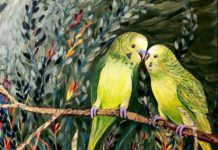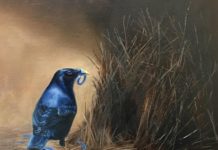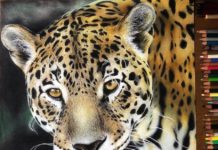When it comes to Polly Townsend’s paintings, the land itself is her protagonist. Treating the land as a singular subject, she disembodies its form whilst remaining faithful to the original patterns, colors, and light. This objectification helps probe the gap between the beautiful and the savage.
“The work draws on journeys I have made to specific destinations around the world,” shared Townsend in an interview with Jackson’s Art. These places share a common type of geology. “They are places where the land is stark and exposed, unfertile, remote and even hostile,” she says, adding that she can’t easily explain why she’s attracted to them, but they are captivating and seem to energize her.
Her paintings draw on solitary journeys through many of the most remote and hostile landscapes in the world, with recent works inspired by visits to Kashmir and Kyrgyzstan. The finished product presents a view of the world beyond the familiar, of places vast in scale, apparently desolate and mostly uninhabited. According to Townsend, an increasing part of the documentation process is the exploration of human impacts on even the remotest physical environments. “There are two main curiosities in the work,” she notes, “that of the very formal qualities of the land; how it is in terms of its physical attributes, and, how that basic formal physicality registers and filters through me.”
Each painting originates from an expedition or a residency. She produces small works on site using a collapsible easel, sketchbooks and photography, building up larger canvases in her London studio. “I travel with a basic lightweight kit (oils or acrylics depending on practicality) and a small easel, pencils, charcoals, and a camera,” she notes. “Sometimes these small works succeed in their own right and sometimes they become the backbone of studio work.”
















